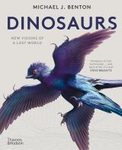Monograph Journal / Magazine
By: Gary S Morgan(Author), Ross DE MacPhee(Author), Roseina Woods(Author), Samuel T Turvey(Author)
79 pages, 24 b/w photos, b/w illustrations and b/w maps, 8 tables
![Late Quaternary Fossil Mammals from the Cayman Islands, West Indies Late Quaternary Fossil Mammals from the Cayman Islands, West Indies]()
Click to have a closer look
About this book
Customer reviews
Related titles
About this book
Abundant fossils of nesophontid lipotyphlan insectivores and capromyid rodents have been collected from late Quaternary deposits on the Cayman Islands, an island group separated by a major marine barrier from other Caribbean landmasses and isolated from anthropogenic impacts until the arrival of Columbus in 1503 CE. These collections have not previously been formally described. Using morphological and ancient DNA approaches, we document three new taxa of extinct endemic terrestrial mammals from this island group: Nesophontes hemicingulus (Grand Cayman and Cayman Brac), Capromys pilorides lewisi (Grand Cayman, Little Cayman, and Cayman Brac), and Geocapromys caymanensis (Grand Cayman and Cayman Brac). Morphometric comparisons with other extinct and living West Indian mammals indicate that the biogeographic origins of all three new taxa are from source populations on Cuba. Ancient DNA data indicate very low sequence divergence of Capromys pilorides lewisi from mainland Cuban C. pilorides (only 0.5% across the entire mitogenome). Using probabilistic analysis of existing and new radiometric dates, we calculate an estimated extinction date of 1700 CE (95% confidence interval = 1632-1774 CE) for the Cayman Brac Capromys population. This result suggests that at least one endemic Cayman terrestrial mammal population survived for well over a century following first European arrival in the Cayman Islands. The West Indies lost nearly all its species-rich late Quaternary land mammal fauna during the late Holocene due to direct or indirect human impacts, and this study provides a new baseline to understand the magnitude of human-caused mammal extinctions during the recent past.
Customer Reviews
Monograph Journal / Magazine
By: Gary S Morgan(Author), Ross DE MacPhee(Author), Roseina Woods(Author), Samuel T Turvey(Author)
79 pages, 24 b/w photos, b/w illustrations and b/w maps, 8 tables













































